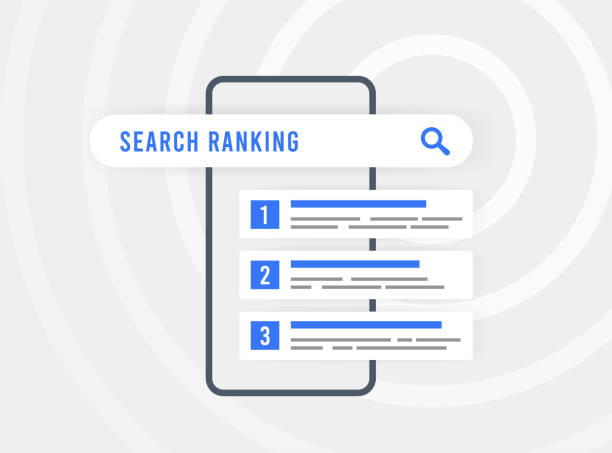Table of Contents
What is User Experience (UX)?
User experience (UX) is the overall experience a user has when using a website or application. The design, usability and functionality of the Asman website are all inclusive. High UX provides a smooth and pleasant user experience, while poor UX leads to frustration and dissatisfaction. SEO, i.e. Search Engine Optimization, is the process of optimizing a website for search engines and getting higher search rankings. UX and SEO are inextricably linked, and in this article we look at how UX affects SEO.
The relationship between SEO and UX
The relationship between SEO and UX is very close these days. The search engine, Jesse K. Google, now considers user experience rather than surf keywords when making ranking decisions. If your website’s UX is better, users will have a better experience and stay on the website longer.
Page Load Speed or SEO
Page loading speed is very important for UX and SEO. If your website is slow, customers become impatient and leave the site quickly. Search engines also treat page speed as a ranking factor. According to Google research, users who wait more than 3 seconds leave a website. So, if your website’s load time works, it will not only improve the user experience but also improve the SEO ranking.
Mobile-friendliness and SEO
Mobile-friendliness is also an important UX factor that impacts SEO. Most of the users nowadays use the internet through mobile devices. If your website is not mobile friendly, users face difficulties that force them to leave the website. Google now uses mobile-first indexing, which treats the mobile version as the primary version. Similarly, mobile optimization directly affects SEO rankings.
Navigation or SEO
Website navigation also affects UX and SEO. If users find it difficult to navigate a website, they tend to linger on the site and eventually leave. Clean and intuitive navigation not only enhances the user experience, but also helps search engines crawl easily. The right navigation structure helps search engines understand the content of a website and improves SEO rankings.
Content quality or UX
Content quality is another important factor that affects UX and SEO. High-quality, relevant, and engaging content attracts users and does not compel them to linger on the website. Good content enhances the user experience and also signals to search engines that your website provides valuable information. Without quality content, you cannot rank high in SEO rankings.
User Engagement Metrics and SEO
User engagement metrics, such as bounce rate, average session duration, per session and pages, are better indicators of UX and SEO. If users stay on your website for a long time and visit multiple pages, it signals to search engines that your website is valuable. Lower bounce rates and engagement metrics improve SEO rankings. Therefore, improving user engagement is essential for UX and SEO.
User feedback or SEO
User feedback is important for UX and SEO. By taking feedback from users, you can identify what works for them and improve your website with us. Positive user feedback not only improves surf UX, but also signals to search engines that your website is user-friendly and has valuable content. What’s more, thinking about user feedback can also boost a website’s SEO performance.
Accessibility or SEO
Website accessibility also affects UX and SEO. Accessible websites are easy to use for all users, including people with disabilities. Search engines also look at accessibility factors, such as alt text for images and readable font sizes. If your website is accessible, users will have a better experience and it will be easier for search engines to rank your site. Therefore, incorporating accessibility into website design is beneficial for SEO and UX.
Internal linking and SEO
Internal linking, i.e. linking from one page to another, is beneficial for UX and SEO. A good internal linking strategy helps users find relevant content and stay on the website longer. It also helps search engines understand the structure and content of the website. Internal links improve SEO rankings where you can make a website more search engine friendly.
Clean up calls to action (CTAs) and SEO.
Clear and effective calls to action (CTAs) also impact UX and SEO. CTAs guide users to take specific actions, such as signing up, making a purchase, or getting in touch. Agar CTAs are clearly and prominently placed, making it easy for users to take the desired actions. This improves user engagement and conversions, which indirectly boosts SEO rankings. CTAs also improve user experience and help search engines understand the value of a website.
Schema Markup and SEO
Schema markup, i.e. using structured data, is to enhance SEO and UX Dono. Schema markup gives search engines additional information about a website’s content, such as seeing rich snippets in search results. It provides better information to users and also improves search engine rankings. Schema markup is for website content search engines.
Page Design and SEO
Website design also affects UX and SEO. An aesthetically pleasing and user-friendly design gives users a positive experience and keeps them on the website longer. For SEO, design elements like readable fonts, clear headings, and well-structured content are important. Achy design helps search engines crawl the website easily and also improves user engagement. Therefore, it is important to align website design with SEO and UX requirements.
Regular updates or SEO
Regular updates and fresh content also impact UX and SEO. If your website is regularly updated and provides new content, users get the latest information and keep coming back to the website. Search engines also prefer regularly updated websites as it shows the website’s relevance and authority. Regular updates increase SEO ranking and improve user experience.
Conclusion
User experience (UX) and SEO are closely intertwined these days.UX provides a better user experience, which improves a website’s engage
Event metrics and search engine rankings. It is important to handle SEO and UX with an integrated approach so that overall website performance and user satisfaction can increase. Therefore, if you want to improve your website’s SEO and UX, there are two aspects to focus on.



